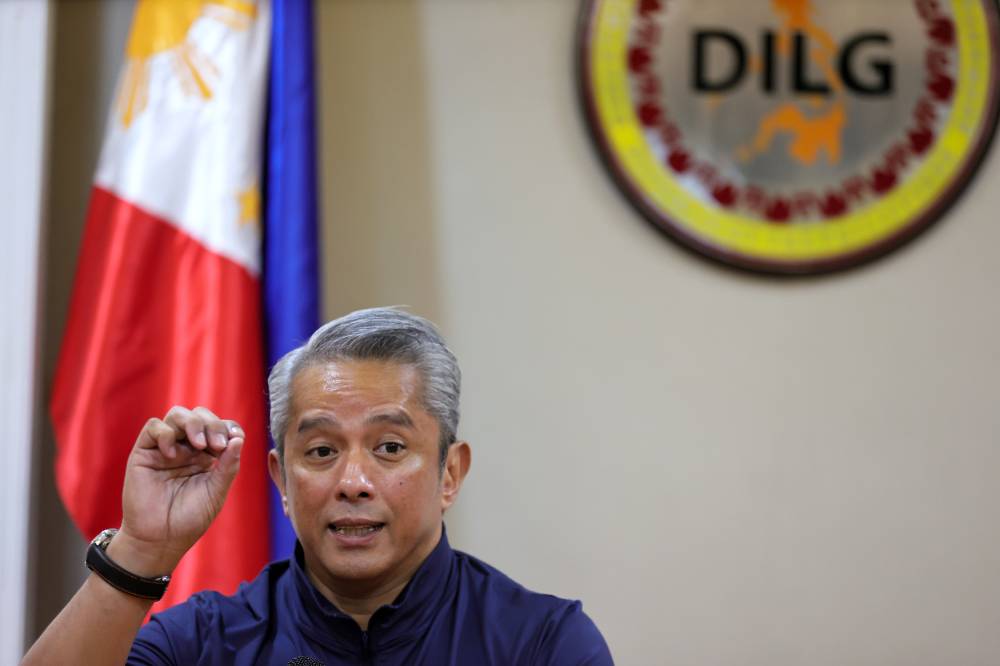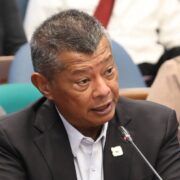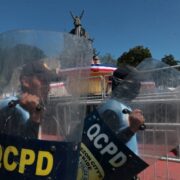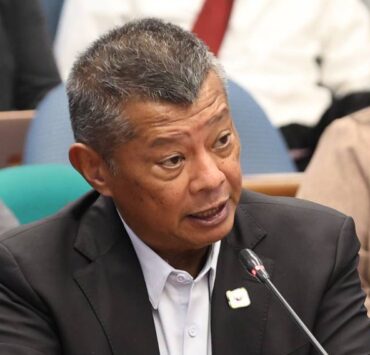DILG readies raps vs local execs who defied travel ban

The Department of the Interior and Local Government (DILG) will file cases before the Ombudsman against some government officials who left the country as it was reeling from back-to-back typhoons.
On Nov. 8, the DILG ordered all elected and appointed local officials to suspend their travels abroad from Nov. 9 to Nov. 15 to ensure their presence on the ground during the onslaught of Supertyphoon “Uwan” (international name: Fung-wong).
Asked about their investigation of the officials who defied the DILG order at a chance interview in Camp Crame on Monday, Interior Secretary Jonvic Remulla said, “We’re almost done. We will file the corresponding cases at the Ombudsman for the blatant violations they committed.”
According to him, around 24 officials will be charged, some from Cebu who flew to Europe just as Typhoon “Tino” (international name: Kalmaegi) devastated the province on Nov. 4.
Remulla said they face charges of abandonment of duty, gross neglect and insubordination.
Complicated process
Asked when the charges will be filed, he told reporters: “We’ll see. We are completing our investigation. We’re getting their return flights. It’s a very complicated process.”
“Whoever needs to be punished will be punished,” he added.
Among the officials who were reported to have defied the travel ban were Isabela Gov. Rodolfo Albano III and eight Cebu local officials. They were Pilar Mayor Manuel Santiago, Poro Mayor Edgar Rama, Tudela Mayor Greman Solante, Cebu provincial council member Andrei Duterte, Liloan Mayor Aljew Jordan Frasco, San Francisco Mayor Alfredo Aquillano, Catmon Mayor Avis Ginoo-Monleon and Compostela Mayor Felijur Quiño.
The DILG office in Cagayan Valley previously said that Albano’s official travel leave was filed and approved weeks before Uwan struck Luzon. The Cebu local officials, on the other hand, had sought permission from Cebu Gov. Pamela Baricuatro back in September to go to the United Kingdom for the World Travel Market.
The Office of Civil Defense (OCD), meanwhile, said that as of Monday, the number of people killed by Tino was at 269 while for Uwan, it was 28.
According to OCD deputy spokesperson Diego Mariano, of the 269 deaths due to Tino, the majority were reported in Cebu (150), followed by Negros Occidental (77) and Negros Oriental (23).
Six were killed in Agusan del Sur, three in Capiz, two each in Leyte, Southern Leyte and Dinagat Island, while Antique, Capiz, Iloilo, Guimaras and Bohol reported one fatality each.
Of the 28 deaths due to Uwan, only Ifugao logged double-digit fatalities at 10, followed by Kalinga with four. Nueva Vizcaya, Mountain Province and Benguet recorded three fatalities each.
Agri, infra damage
A total of 113 individuals remain missing due to Tino, mostly in Cebu (57), followed by Negros Occidental (50) and Negros Oriental (6), while only two individuals are yet to be accounted for due to Uwan.
On the other hand, Tino left 523 either injured or sick, compared with 52 for Uwan.
In terms of damage to infrastructure and agriculture caused by Tino, the figures were at P490.1 million and P484.8 million, respectively, according to the situation report of the National Disaster Risk Reduction and Management Council (NDRRMC).
A separate NDRRMC situation report for Uwan estimated the damage to infrastructure at P2.2 billion and P1.9 billion for agriculture.
Cebu bore the brunt of Tino, whose torrential rains caused heavy flooding, which accounted for many of the deaths and damage in the province.
Uwan’s torrential rains, on the other hand, set off flash floods and landslides in northern Luzon provinces.
Their combined effects led President Marcos to approve the declaration of a state of national calamity in the country, enabling government agencies to draw from emergency funds and fast-track the procurement of essential goods and services for typhoon victims.

















